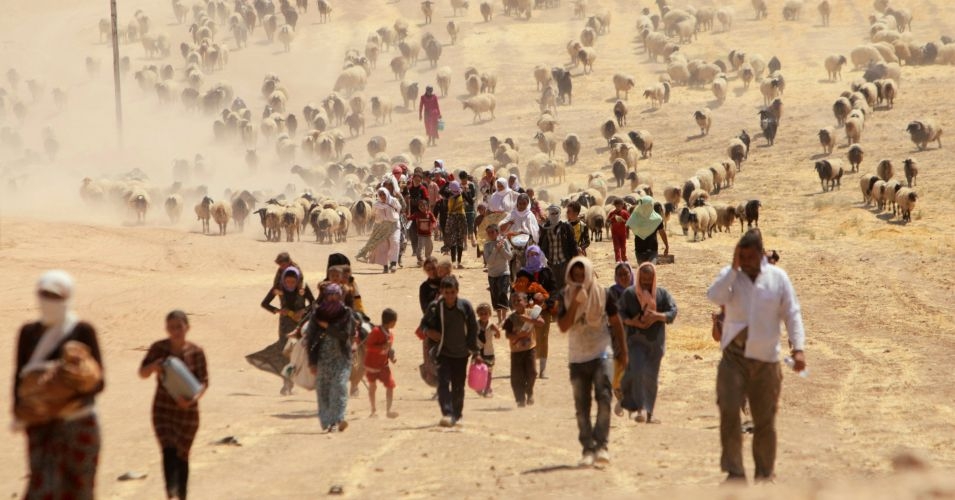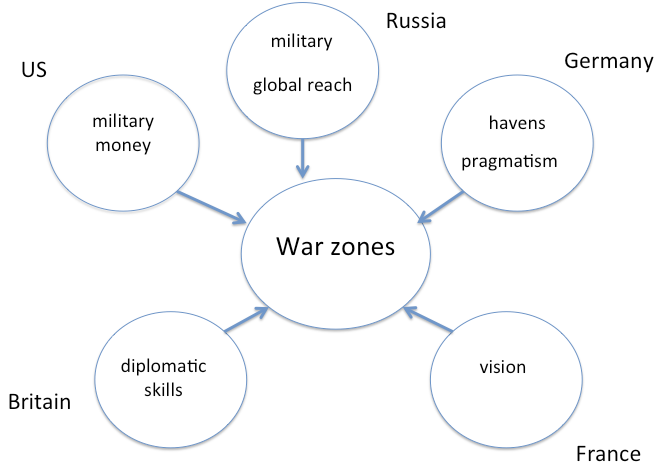Article by Richard D. Lewis
The wars and unrest in Syria, Libya, Iraq and Afghanistan have caused mass displacement of people involving the migration of anything up to 2 – 4 million refugees. One talks of a migrant crisis, but it is in effect a refugee crisis, as mass migration often has beneficial effects, particularly in those countries on the receiving end. This was certainly the case for the United States in the late 19th and early 20th centuries, producing the melting pot, which laid a vigorous foundation for American development and industrial progress.
The numbers of refugees in 2015 shock the western democracies. Germany alone has bravely accepted up to one million people but smaller countries such as Hungary, Croatia, even Denmark and Sweden, are hastily setting up barriers of various kinds to safeguard their frontiers and demographic balance. The carnage and scale of destruction of property in Syria particularly has created what seems to be a new and rapidly escalating situation in Europe, even though Syria is not European, but a neighbour.
Actually there is nothing new about this. History repeats itself; wars cause vicious disruptions and displacement of humans. The current crisis, though significant and of course life-changing for those caught up in it, is a relatively minor event in comparison with what happened in the case of another war, namely the Second World War. When Fiorello La Guardia, three times Mayor of New York, was appointed by President Truman as Director of the United Nations Relief and Rehabilitation Administration (UNRRA) at the end of the war, they estimated they would have to deal with around 7 million refugees. By the time the refugee camps closed in 1949, it was considerably more than that – around 11.5 million. And in 1946 there were still around 4 million Displaced Persons (DPs) in Europe. The difference between a DP and a refugee was that a DP had a home to go to (if it could be found) but a refugee was homeless.
Post 1945 the Americans, including their military personnel, were intricately involved, administratively and financially, with UNRRA, which had been set up by Churchill and Roosevelt in 1944 with a huge budget of $10 billion. The Americans contributed three quarters of the money and Britain and Canada the rest.
The Americans had learnt some lessons when setting up the ARA (American Relief Administration) at the end of the First World War. The ARA had been overwhelmed by the influenza epidemic in 1919, which killed more than 12 million people in Europe alone, and rather more in Asia. Such numbers in the aftermath of two world wars, puts the 2015 crisis into a historical perspective.
Looking back to UNRRA, the workload was considerably greater than expected. 450 teams of aid workers were needed. Many of them contained military personnel – untrained in aid work. In some camps conditions were very poor – hunger, corruption, prostitution, child-bearing in unsuitable surroundings were some of the problems. There was constant tension between the military, politicians, soldiers and aid workers. There was little fraternity in defeat and suffering.
We all know that in the 1950s and the decades that followed, Europe was rebuilt and eventually prospered. Refugees eventually settled in new countries to which they began to owe allegiance. Migrations continued to other continents, without pressure. Countries such as Australia and Canada acquired badly-needed populations and workers. Such countries continue to be wonderful ‘havens’ today. Canada is arguably the most multi-cultural country in the world and has benefitted considerably from this.
The current ‘crisis’ has to be seen and evaluated as a relatively minor one in the long course of human history. Twenty-first century society has the institutions, financial resources, societal structures, political experience and eventual will to solve the bitterly critical events we are witnessing.
Of course the easiest way is to extinguish the current hostilities that are continuing. Compared with the 1939-45 war, these hostilities are a mere skirmish. It should not be beyond the ability of the biggest nations – US, Russia, Britain, Germany and France – once they co-operate – to help to find practical solutions for achieving peace. Possible contributions, including cultural considerations, might include the following:
US – Military, money, focus on economies
Russia – Military, desire to play a global leadership role
Britain – Diplomacy, support for other key players
France – Vision, willingness to engage with different actors
Germany – Havens, pragmatism
Aid patterns
Post Tags: Tags: host countries, refugee crisis


